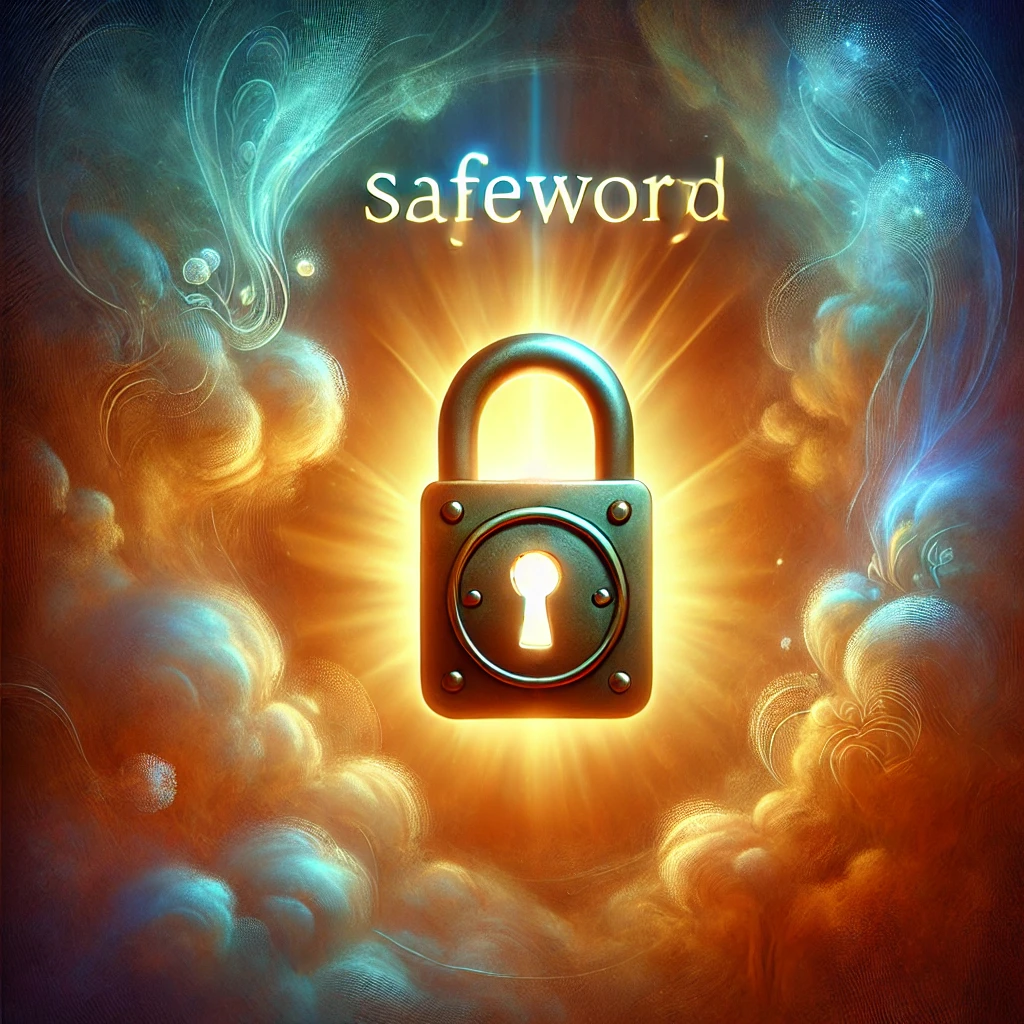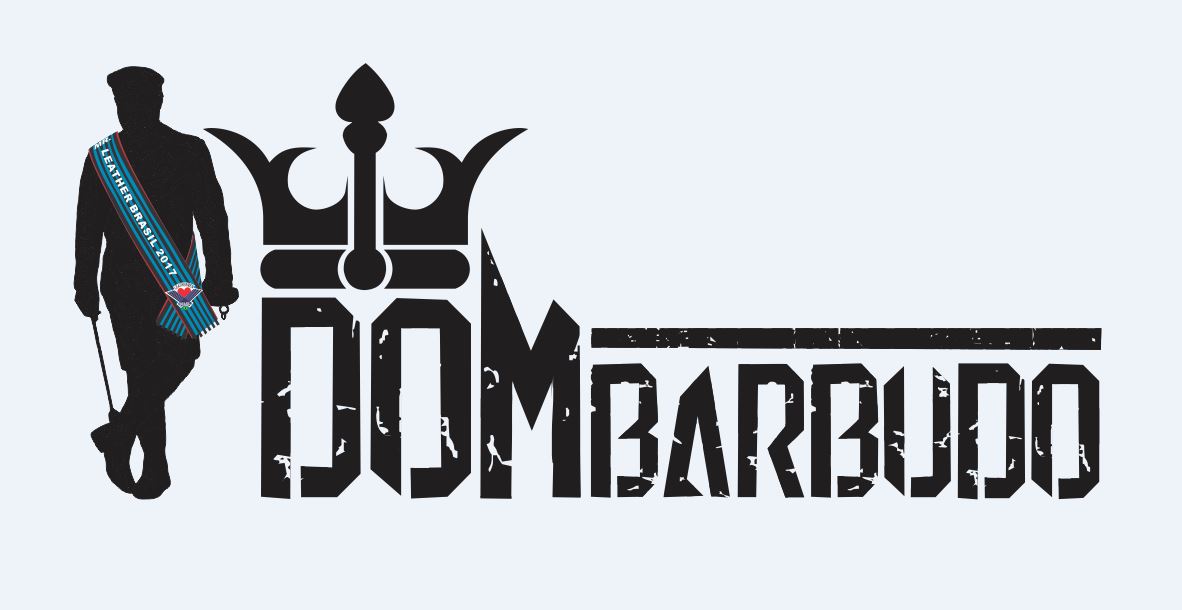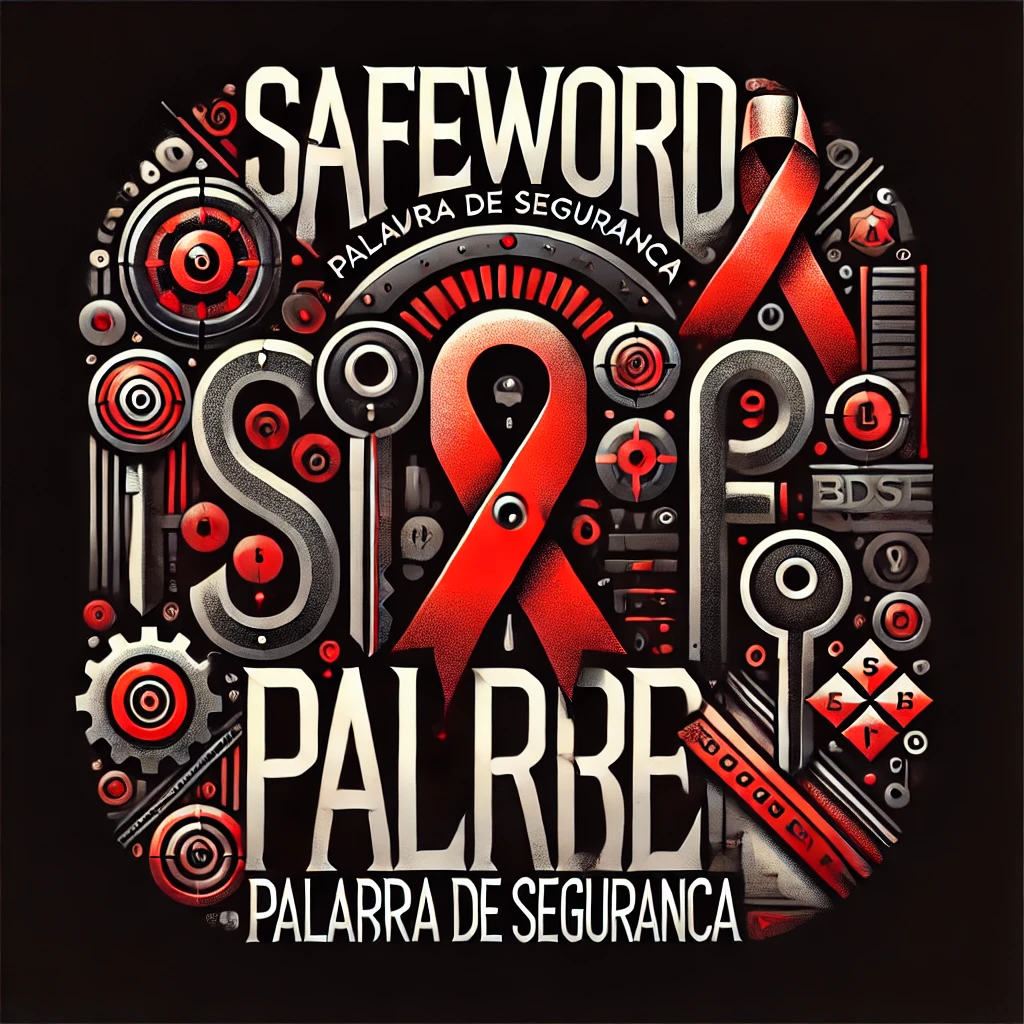📖 PALAVRA DE SEGURANÇA / SAFEWORD
Categoria: Conceito
🔑 PALAVRAS-RELACIONADAS
Limite rígido, comunicação BDSM, consentimento implícito, proteção psicológica, interrupção imediata, alerta verbal, segurança emocional, limites pessoais, código verbal, segurança física.
🔠 DEFINIÇÃO
Uma Palavra de Segurança (Safeword) é um termo previamente combinado entre os envolvidos numa prática BDSM, usado para interromper imediatamente a cena, sinalizar desconforto, dor excessiva ou ultrapassagem de limites pessoais. É uma ferramenta verbal essencial para garantir a segurança física, mental e emocional do submisso.
🔎 SIGNIFICADO
A Palavra de Segurança, também conhecida mundialmente como “Safeword”, desempenha um papel vital no BDSM, atuando como uma garantia de que os limites pré-estabelecidos sejam respeitados. Durante uma cena BDSM, especialmente aquelas que envolvem dor, humilhação intensa ou práticas extremas, a excitação e adrenalina podem interferir na clareza da comunicação comum. Por isso, a safeword surge como um recurso claro, inequívoco e inquestionável de alerta, com o propósito direto de interromper ou pausar a ação imediatamente, evitando traumas físicos ou psicológicos irreparáveis.
Uma safeword não pode ser um termo comum como “não” ou “pare”, pois estes podem fazer parte do cenário e serem confundidos com estímulos da própria cena. Por isso, escolhem-se palavras neutras e específicas, tais como “vermelho” (stop total), “amarelo” (reduzir intensidade ou atenção), e até “verde” (está tudo bem, prossiga), compondo um sistema simples e eficaz conhecido como “Sistema Semáforo”.
🔗 APLICAÇÃO
A safeword é amplamente utilizada em todas as dinâmicas BDSM, desde sessões de spanking e bondage até práticas extremas como breathplay ou humilhação profunda. Além de interromper imediatamente as ações, a palavra de segurança também permite recalibrar a cena, possibilitando ajustes rápidos na intensidade ou abordagem, garantindo assim uma experiência positiva e segura para todos os envolvidos.
Exemplos práticos incluem:
- Utilização da palavra “vermelho” quando o submisso sente dor acima do desejado.
- Uso do termo “amarelo” quando deseja reduzir o ritmo ou intensidade, sem interromper completamente.
- Um gesto alternativo (quando a comunicação verbal é impossível), como bater três vezes com as mãos ou piscar rapidamente.
🧠 IMPACTO MENTAL, FÍSICO E EMOCIONAL
Mentalmente, a existência da safeword proporciona tranquilidade e segurança emocional, permitindo ao submisso se entregar completamente à experiência sem medo de danos permanentes ou violação irreversível dos seus limites pessoais. Fisicamente, protege contra lesões que poderiam surgir de uma comunicação ineficiente. Emocionalmente, fortalece a confiança e a cumplicidade entre os parceiros, criando um ambiente de profundo respeito mútuo, mesmo nas cenas mais extremas.
📢 RELAÇÃO COM OUTROS TERMOS
A safeword está diretamente ligada aos conceitos de “limites rígidos” (hard limits) e “consentimento implícito”, sendo parte essencial da comunicação BDSM segura. Também relaciona-se estreitamente ao conceito de aftercare, pois após o uso de uma safeword, é fundamental o cuidado emocional e físico, assegurando a recuperação plena de quem a utilizou.
🔒 SIMBOLOGIA E REPRESENTAÇÃO NO BDSM
Simbolicamente, a palavra de segurança representa o respeito aos limites pessoais e a manutenção da integridade física e emocional do submisso. É um símbolo máximo de confiança, evidenciando maturidade emocional e responsabilidade por parte do Dominador, e compromisso em preservar o bem-estar do submisso acima de qualquer fantasia ou desejo momentâneo.
🤝 NEGOCIAÇÃO
Antes de iniciar qualquer prática BDSM, a definição clara de uma safeword é indispensável, devendo ser negociada e aceita por todos os envolvidos. A eficácia da safeword depende diretamente da compreensão clara de seu significado e da garantia absoluta de seu cumprimento. Todos devem se sentir completamente seguros e confortáveis em usar essa palavra, sem receio ou hesitação.
💊 CUIDADOS ANTES E DEPOIS
Antes da cena, esclareça o uso da safeword com clareza absoluta. Certifique-se de que o submisso está ciente de que a palavra pode ser utilizada a qualquer momento sem julgamento ou crítica. Após o uso da safeword, o Dominador deve interromper imediatamente as ações e iniciar o aftercare, dando conforto emocional e atenção adequada ao submisso.
🚀 IMPACTO FINAL
Safeword é confiança absoluta: parar é proteger e respeitar limites nunca enfraquece sua autoridade dominante.
🔍 6 PERGUNTAS COMPLEMENTARES
- Qual é a safeword mais usada no BDSM?
A safeword mais comum globalmente é “vermelho”, parte do popular “Sistema Semáforo”, em que “amarelo” indica cautela ou diminuição de intensidade, “vermelho” interrompe imediatamente a cena e “verde” indica que está tudo bem para prosseguir. Essa simplicidade ajuda a evitar confusões durante as práticas BDSM, especialmente as mais intensas. - 2. É obrigatório ter uma safeword no BDSM?
Embora não exista uma regra formal que torne obrigatória a utilização da safeword, ela é altamente recomendada em todas as práticas BDSM, especialmente as que envolvem intensidade emocional ou física mais elevada. A safeword protege contra situações inesperadas, garantindo segurança e conforto psicológico a todos os participantes. - 3. O que fazer se o submisso não conseguir usar a safeword verbalmente?
Para situações em que a comunicação verbal é impossível ou comprometida, devem ser definidos previamente sinais ou gestos alternativos. Exemplos comuns são: bater repetidamente as mãos, apertar um objeto dado pelo Dominador ou balançar a cabeça de forma enfática. O importante é garantir uma forma clara e inequívoca de comunicação em qualquer circunstância. - 4. Posso usar a safeword para pequenas pausas ou ajustes?
Sim. Palavras intermediárias, como “amarelo”, são justamente destinadas a pequenos ajustes ou pausas sem interromper totalmente a cena. Dessa forma, é possível ajustar intensidade, ritmo ou abordagem conforme o submisso precise, mantendo a dinâmica confortável para todos. - 5. O Dominador também pode utilizar uma safeword?
Sim, embora menos frequente, um Dominador pode utilizar uma safeword ou sinal próprio para indicar desconforto emocional, físico ou para interromper a cena por razões pessoais ou emergenciais. A safeword não é exclusiva ao submisso e pode ser aplicada por qualquer participante envolvido na cena. - 6. Como escolher uma boa safeword?
Uma boa safeword deve ser fácil de lembrar, incomum no contexto da cena BDSM, e impossível de confundir com palavras do cotidiano como “não”, “pare” ou “chega”. Exemplos populares incluem nomes de frutas, cores ou termos completamente desconexos com a situação, garantindo que o alerta seja sempre claro e inquestionável. - 🚩 IMPACTO FINAL
Safeword não limita, ela protege. BDSM seguro começa com comunicação clara e respeito total aos limites.

📖 SAFEWORD
Category: Concept
🔑 RELATED WORDS
Hard limits, BDSM communication, implicit consent, psychological protection, immediate interruption, verbal alert, emotional safety, personal boundaries, verbal code, physical safety.
🔠 DEFINITION
A Safeword is a pre-agreed word used by participants in BDSM scenes to immediately stop the action or indicate discomfort, excessive pain, or breached boundaries. It’s a fundamental verbal tool designed to ensure physical, mental, and emotional safety.
🔎 MEANING
The safeword plays an essential role in BDSM by guaranteeing that all established boundaries are strictly respected. During intense scenes involving pain, humiliation, or extreme practices, excitement and adrenaline can hinder clear communication. Therefore, a safeword provides a clear, unmistakable signal to pause or fully stop activities, preventing physical injuries or psychological harm.
Common words such as “no” or “stop” aren’t used as safewords because they may naturally occur within the scene. Instead, neutral and distinct words like “red” (stop immediately), “yellow” (slow down or be cautious), and “green” (continue safely) form the well-known “Traffic Light System.”
🔗 APPLICATION
Safewords are widely used across various BDSM dynamics, from spanking and bondage to extreme practices like breathplay or intense humiliation. Beyond merely stopping activities, safewords also help recalibrate the scene, allowing adjustments in intensity or approach, ensuring a positive and safe experience for all parties involved.
Practical examples include:
- Using “red” when a submissive experiences unwanted pain.
- Employing “yellow” to signal reducing intensity without fully stopping.
- Establishing alternative gestures, such as tapping three times or rapid blinking, if verbal communication is impaired.
🧠 MENTAL, PHYSICAL, AND EMOTIONAL IMPACT
Mentally, the presence of a safeword offers reassurance and emotional security, enabling submissives to fully surrender to the experience without fearing permanent harm or irreversible boundary violations. Physically, it prevents injuries resulting from ineffective communication. Emotionally, it strengthens trust and deepens intimacy between partners, creating an atmosphere of mutual respect, even in the most intense scenarios.
📢 RELATIONSHIP TO OTHER TERMS
Safewords are directly linked to concepts like “hard limits” and “implicit consent,” forming an essential component of safe BDSM communication. They are also closely associated with aftercare, as post-safeword care is critical to ensuring the submissive’s emotional and physical well-being.
🔒 SYMBOLISM AND REPRESENTATION IN BDSM
Symbolically, the safeword embodies respect for personal boundaries and safeguards the emotional and physical integrity of submissives. It represents ultimate trust, demonstrating emotional maturity and responsibility from the Dominant, who prioritizes the submissive’s well-being above momentary desires or fantasies.
🤝 NEGOTIATION
Clearly defining and agreeing upon a safeword before starting any BDSM activity is essential. Its effectiveness depends entirely on mutual understanding and absolute commitment to respect its use. Participants must feel fully safe and confident using the safeword without hesitation or fear of judgment.
💊 PRE- AND POST-CARE
Before starting a scene, clarify the use of the safeword explicitly. Ensure the submissive understands it can be used freely without repercussions or criticism. After a safeword is used, the Dominant must immediately stop the activities and engage in aftercare, providing emotional comfort and appropriate physical attention.
🚀 FINAL IMPACT
A safeword symbolizes absolute trust: stopping is protecting, and respecting limits never weakens your dominance.
🔍 6 COMPLEMENTARY QUESTIONS
- What is the most commonly used safeword in BDSM?
The most widely used safeword worldwide is “red”, part of the popular “Traffic Light System”, where “yellow” signals caution or reduced intensity, “red” means immediate stop, and “green” indicates that everything is fine and the scene can continue. This simple system avoids confusion, especially during more intense BDSM practices. - Is it mandatory to have a safeword in BDSM?
There’s no formal rule making the use of a safeword mandatory, but it’s strongly recommended in all BDSM practices, especially those involving high emotional or physical intensity. A safeword protects against unexpected situations, ensuring psychological comfort and safety for everyone involved. - What if the submissive can’t use the safeword verbally?
In situations where verbal communication is impossible or limited, alternative signals or gestures must be agreed on beforehand. Common examples include: tapping repeatedly with the hands, squeezing an object given by the Dominant, or nodding/shaking the head clearly. The key is to ensure a clear, unmistakable way to communicate — no matter the scenario. - Can I use the safeword for small pauses or adjustments?
Yes. Intermediate words like “yellow” are specifically meant for making small pauses or asking for decreased intensity without stopping the scene entirely. This allows the sub to regulate the rhythm, energy or style of the play, keeping the dynamic enjoyable and safe for both sides. - Can the Dominant use a safeword too?
Absolutely. While it’s less common, a Dominant can also use a safeword or custom signal to indicate emotional or physical discomfort, or to pause the scene for personal or urgent reasons. Safewords are not exclusive to submissives — they’re tools of protection and responsibility for all parties. - How do I choose a good safeword?
A good safeword must be easy to remember, unusual in BDSM context, and clearly separate from any word that might be mistaken as part of the roleplay, such as “no,” “stop,” or “enough.” Popular choices include names of fruits, colors, or completely unrelated words — anything that stands out and cannot be misunderstood during the scene.
🚩 FINAL IMPACT
A safeword doesn’t restrict—it protects. Safe BDSM begins with clear communication and absolute respect for boundaries.

VEJA O TERMO: SAFEWORD
TAKE A LOOK AT THE TERM: SAFEWORD








